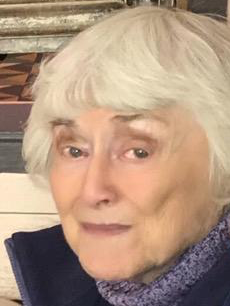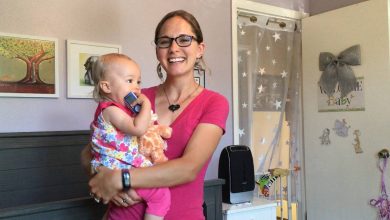Diabetic for 72 Years: How Community Helped Pat McAlister Beat the Odds
Pat McAlister was diagnosed in 1947 and shares some of her life experiences and offers advice on thriving with diabetes for the long haul


Being diagnosed with type 1 diabetes in the 40s meant you probably weren’t going to live a full life. In fact, when Pat McAlister’s parents found out their young daughter was diabetic, the doctor told them she wouldn’t live past the age of 25.
Luckily no one told Pat that.
More than 70 years have passed since that fateful day and Pat is still very much alive. An active member in the diabetic community, she credits some of that longevity to the connections she has made with other diabetics along the way.
Young and Isolated
Growing up in Cut Bank, Montana, a small town on the Hi-Line which is famous for being the coldest spot in the contiguous United States, Pat was already used to feeling a bit isolated. But that isolation grew exponentially one summer when she was just a child.
For months, she had been showing increasingly worrisome symptoms. The local doctors weren’t sure what was wrong. Most thought that it must be a prolonged flu, while one wanted to take her tonsils out. By the time they found a doctor that could help, her symptoms were so bad that the doctor knew immediately what was wrong.
That doctor taught Pat’s parents how to weigh her food, test her urine for sugar, and administer insulin and sent the family home. For years, her parents were in full control of her care, but all of that changed when bad flu landed Pat back in the hospital. A new doctor on staff administered IVs but failed to give Pat any insulin. She ended up in a coma and didn’t wake for almost two weeks.
Once she was well enough to travel, Pat was sent to Great Falls for her first appointment with an endocrinologist. This doctor taught her how to manage her diabetes, measure her own food, and give her own insulin.
While Pat felt more empowered to care for her illness than she ever had in the past, the feeling of isolation only grew. When she had arrived at the doctor’s office, she found the waiting room empty. When it was time to leave, a nurse escorted her out a back door to the parking lot. When she asked why she had to leave through the back, the nurse told her that patients with diabetes weren’t allowed to speak to one another.
The doctors weren’t worried about the patients sharing insulin or anything of that nature. They were more concerned that they would talk to each other about their treatment plans or share tips on how to deal with the many different aspects of life with diabetes.
Over the next few years, after leaving Cut Bank, Pat learned the importance of keeping her diabetes a secret. Job interviews that were going well would immediately turn sour once she revealed her illness, so she stopped mentioning it. While everyone at home had known about her T1D, moving to a new city gave her the opportunity to make others see her as the person she knew she was, not just someone living in the shadow of a life-threatening illness.
But that didn’t mean she had stopped looking for others like her.
The first time she ever met another diabetic was at the age of 17. While she was visiting the coast, a friend introduced her to an acquaintance with type 1. The two went to the movies together and spent hours just talking about their lives with diabetes.
It was a powerful and enlightening moment for Pat. But one she wouldn’t have the opportunity to repeat for another seven years.
Embracing Community
Pat didn’t attend her first diabetic meet up until she moved to Denver at the age of 24. She and the other members discussed their illness, their struggles, and laughed about all the things they did that their doctors could never know about. For the first time in her life, Pat had a platform to talk openly and honestly about life with diabetes.
The diabetic world opened up to Pat after that. She met a diabetic doctor that would become a lifelong friend and was lucky enough to find an OBGYN with T1D that took her on as his private patient when she was pregnant with her first child.
Despite being over the age of 26 – the age her diagnosing doctor told her parents she would never see – Pat gave birth to a healthy baby girl. Looking back, Pat says she absolutely loved being pregnant.
Her doctors joked that they wanted to find a way to keep her pregnant because her diabetes had never been so well managed.
Considering the technology available at the time – at home blood-glucose monitoring was still years off and insulin pumps even further – the fact that neither her daughter nor herself suffered any lasting effects is a testament to Pat’s determination and the importance of working with others who understand diabetes on an intimate level.
Being There For the Next Generation
While growing up with diabetes, all Pat wanted was to see an older person living with the condition. She wanted to know what they looked like, how living with T1D long term had affected them.
She never got that opportunity.
Now, as someone who has lived with type 1 diabetes for over seven decades, she wants to be that person for others, especially those who are newly diagnosed.
Pat currently writes a local diabetic newsletter and has spent time as an ADA board member and a volunteer at the Barbara Davis Center for Diabetes in Colorado. It was in that capacity that she had the opportunity to show young diabetics and their families that it is possible to live a long, full life despite diabetes. More often than not, when groups of newly diagnosed T1Ds would see her, they’d shed tears of relief and tell her how good she looks.
Once, on a trip back home to Montana, a friend told her about a young diabetic who was struggling. Pat made time to meet with her and her friends to help all of them understand what it was like to live with diabetes. Years later, one of the friends reached out to Pat and thanked her for what she had done. She told her that the girl was happily married with children and doing well.
That’s the key, according to Pat. Talking to a counselor or a therapist about the immense struggles that come with diabetes won’t do anything. Even talking to a doctor who has never experienced the illness firsthand won’t help. She says it is incredibly important and helpful when you know the person you are talking to understands exactly how you feel.
While Pat may have lived most of her life without that kind of community, she still sees it as something vitally important for kids growing up with diabetes today. In order to live with T1D, to thrive with it, you need to connect with others who know what “living with diabetes” truly means.
If you’re interested in speaking with Pat about her life or are just looking to build a connection with a fellow diabetic who has experienced it all, you can reach out to Pat at kpmca@msn.com. Please put “Diabetes” in the subject line.







